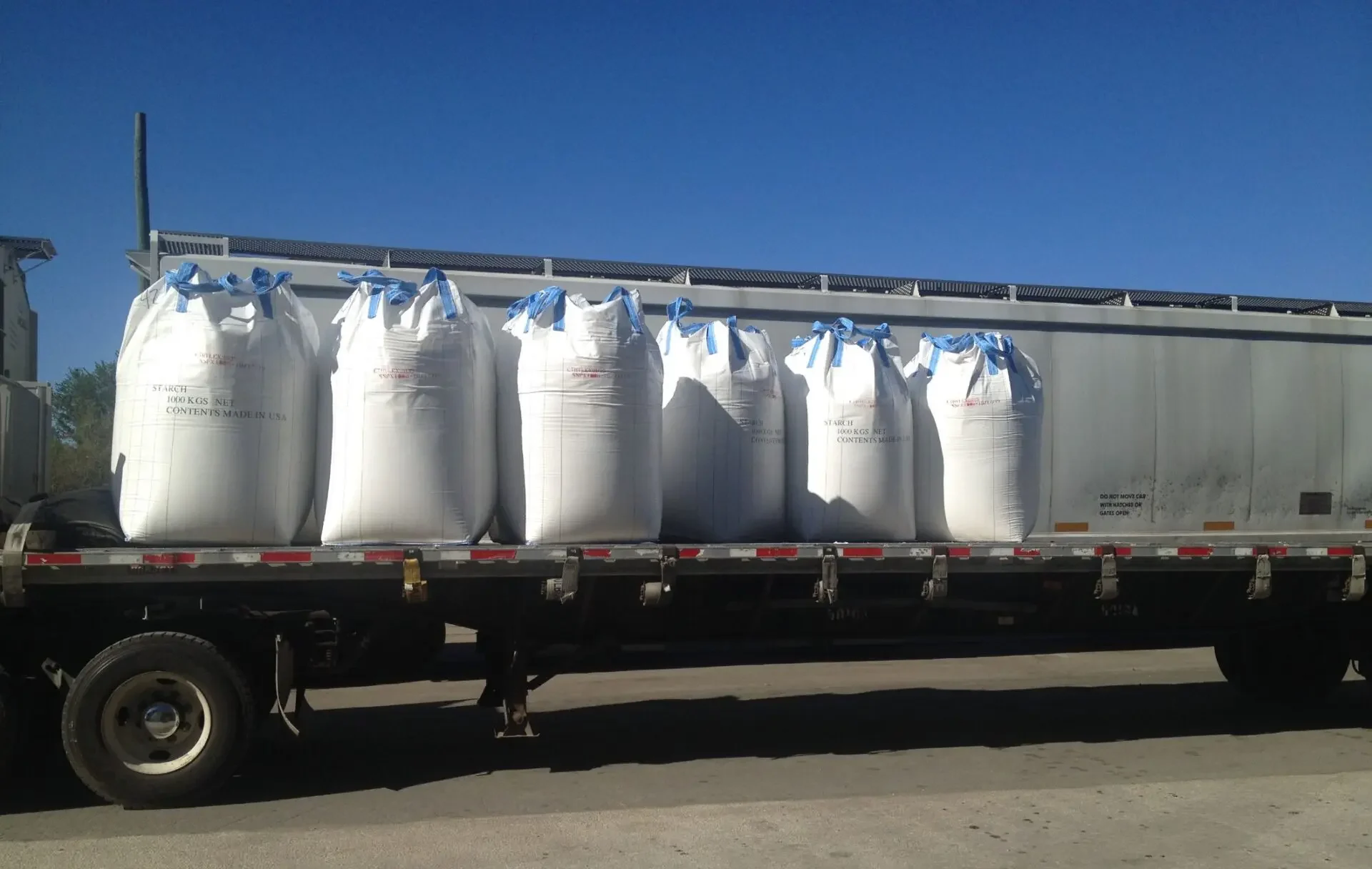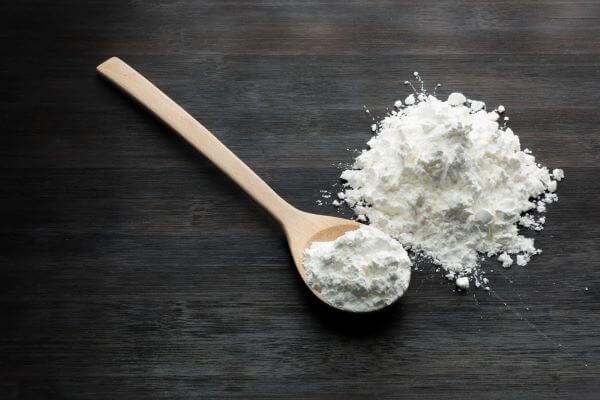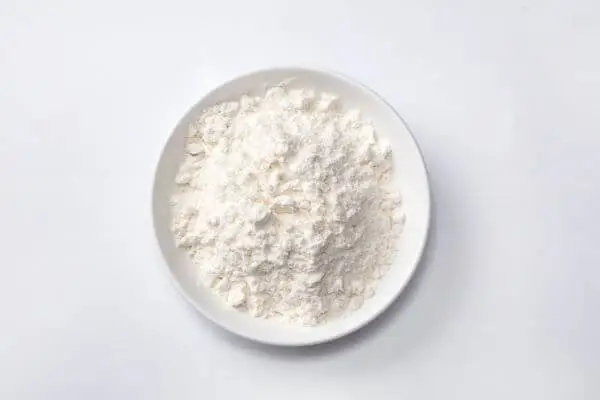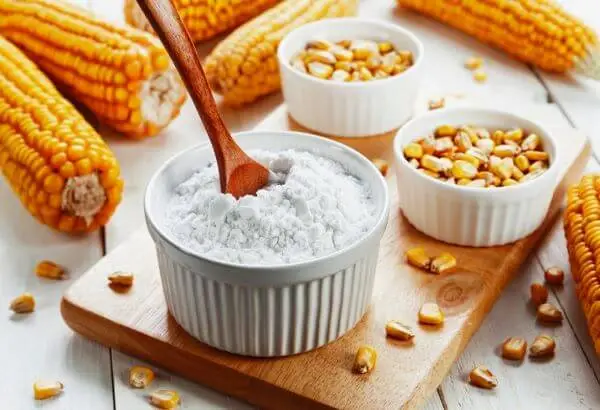 Starch Powder
Starch Powder
WHAT IS STARCH POWDER?
Starch or amylum is a white, granular, organic polymeric carbohydrate produced by all green plants. In fact, starch is a chain of sugar molecules connected together. This soft, white and tasteless powder is insoluble in cold water, alcohol or other solvents. The chemical formula of starch is (C6H10O5)n. This substance is an important component of rice, corn, wheat, beans, potatoes and many other plant foods. It is found in seeds, tubers and other parts of plants and is an important component of rice, corn, wheat, beans, potatoes and many other plant foods. In fact, it is a type of polysaccharide consisting of glucose monomers connected in α 1,4 bonds. The simplest form of starch is the linear polymer of amylose and its branched form is amylopectin.
HISTORY OF STARCH AND HOW TO PRODUCE IT
Starch has been known and used since 100,000 years ago. It is believed to have been used in the preparation of food, such as making bread or foods such as porridge. This hypothesis is based on stone tools discovered in ancient caves. This tool was probably used to scrape and grind wild sorghum starch grains. These observations led scientists to hypothesize that the inclusion of amylum in the diet of early prehistoric humans in the savannahs and forests of Africa improved the quality of the diet. The processing of grains into a staple food represents a shift in the prehistoric diet and is believed to be an important step in human evolution. The word may come from the Old English strach meaning strong and fierce, which in turn may be of Germanic origin.
WHAT ARE THE PROPERTIES OF STARCH?
 Starch
Starch
- Chemical formula (C6H10O5)n
- Soft or granular powder structure
- white
- tasteless
- odorless
- insoluble
- with variable molar mass
- Insoluble in alcohol and cold water
- Low acidity
- Heat resistant
- in both edible and industrial (non-edible) types
- With clear suspension
- Uniform viscosity
WHAT ARE THE USES OF STARCH?
Apart from its main nutritional uses, amylum is used as a thickening agent in baked goods and sweets. This material is used in various industries, including cellulose industries, pharmaceuticals, adhesives, production of prefabricated panels, food industries, textiles, etc.
STARCH IN PAPER PRODUCTION: Starch is used in paper production to increase the strength and resistance of paper. amylum is used in the production of packaging paper, such as floating paper, test liner, and… cardboard and packaging cartons, bags, paper boxes, papermaking, and gummy tape.
APPLICATION OF STARCH IN TEXTILE: Large amounts of amylum are also used in the textile industry as warp size, which gives strength to the yarn during weaving. In addition to improving the quality and resistance of the fabric, this also prepares it for washing.
STARCH IN THE FOOD INDUSTRY: Starchy foods are the main source of carbohydrates for most people. They play an important role in a nutritious and balanced diet, because they provide the body with glucose, which is the main source of energy for every cell. They also provide a wide range of vitamins, minerals, fiber and other nutrients. Starchy foods are also valuable ingredients in the kitchen, as they can thicken soups and sauces without adding fat.
THERAPEUTIC USES OF EDIBLE STARCH
 Starch Usage
Starch Usage
Edible starch is a rich source of fiber, calcium, iron and B vitamins. For this reason, it is used for many treatment cases, some of which we have briefly mentioned below:
- weight gain
- Eliminate bad breath
- Improving tooth infection, relieving inflammation and bleeding gums
- Cholesterol reduction and blood sugar regulator
- Cancer prevention
- Treatment of pain and watery eyes
- Treating colds, sore throats and shortness of breath
- Help treat diarrhea and constipation
- Reducing menstrual bleeding and improving symptoms of premenstrual syndrome
- A kind of natural baby powder
- Treating cough and helping the lungs
- Lightening and preventing skin sagging (combined with rose water and as a mask on the skin)
- Treatment of skin ailments such as sunburn, stings, skin irritation, etc.
- Hydration and supply of moisture needed by the skin (combined with yogurt and as a mask on the skin)
WHAT ARE THE TYPES OF STARCH?
Depending on its nutritional properties, starch is placed in one of the following three groups:
Rapidly Digestible Starch (RDS): This form of amylum is found in cooked foods such as potatoes and bread. The body quickly converts it into glucose.
Slow-digesting starch (SDS): This amylum has a complex structure, which means that the body breaks it down slowly. It is present in cereals.
Resistant Starch (RS): The body cannot easily digest this type of amylum and it can pass through the digestive tract intact like dietary fiber. May support healthy gut microflora.
 Starch Usage
Starch Usage
People can buy different forms of amylum for use in cooking, including:
Potato starch: Raw and chopped potatoes are a source of potato amylum. The liquid amylum dries to a white, flour-like powder. It is gluten-free and is used as a substitute for wheat flour in various recipes.
Tapioca Starch: This versatile flour is obtained from the ground pulp of the cassava root. For edible purposes, it is often mixed with baked goods or used as a thickening agent in soups, stews, and sauces.
Corn starch: This starch is obtained from corn kernels. It can thicken recipes and is a base for corn syrup. Doctors also use it to provide a reliable source of glucose to people with glycogen storage disease.
In addition, there is a reliable source of modified amylum, which is a amylum derivative that manufacturers have developed to change its properties. The food industry widely uses this form of amylum, because it has shown relatively good resistance and stability in various conditions such as extreme heat or cold.
STARCH AS AN ADDITIVE IN COSMETICS
Over the past few years, the trend toward cosmetics with natural ingredients such as starches and oils has been at the forefront of product development, with more consumers looking for alternatives to existing products on the market. But creating an effective and natural product that has the original quality is a challenging hurdle. For example, consumers appreciate the high content of natural oils, but don’t necessarily want to experience a heavy occlusive layer left after use.
BENEFITS OF CORN STARCH FOR SKIN CARE
Cornstarch powder is an effective product that can promote skin health, and in particular, it can be useful for soothing, cleansing, and also protecting the skin.
Here are some of the benefits of cornstarch for skin care:
1. Corn starch for skin infection: Cornstarch is a natural drying agent that helps prevent fungal infections, relieves burning and itching caused by skin infections. A mixture of corn starch and tea tree oil is used to treat fungal infections; Because cornstarch is a drying agent that dries out the affected area while tea tree oil has strong antimicrobial properties that heal the infection.
2. Corn starch for cracked skin: Corn amylum is useful for acne-prone skin; Because it absorbs excess skin oil that causes pimples. Using this product helps to remove dirt, dust and fat on the skin
3. Corn starch for skin whitening: Many people are looking to whiten and lighten their skin and this question arises to them, does amylum whiten the skin? Yes, this product helps to remove dark spots and lighten skin color due to the presence of vitamin A and minerals such as iron and calcium. It also stimulates cell regeneration and promotes overall skin health. In addition, using a corn amylum mask prevents the skin from cracking and by absorbing toxins from the skin, it gives a healthy appearance.
4. Corn starch for skin allergies: Cornstarch is a great treatment for sensitive skin; Because it slowly restores the skin without causing irritation and treats various types of skin allergies. This product is used to relieve skin allergies caused by sunburn and insect bites.
TYPES OF INDUSTRIAL STARCH
Types of industrial starch are often prepared from corn and wheat. In some cases, tapioca and potato starch are used for its production. Industrial starch is obtained by crushing or grinding starch-containing tubers or grains and then mixing the pulp with water. The resulting paste is freed from its remaining impurities and then dried. It is good to know that this material is available in two forms, raw or native starch and oxidized starch, for use in various industries. Ammonium persulfate (APS) is used to adjust the viscosity of raw starch in paper production lines. This is while oxide starch can be produced with the viscosity required by the consumer and can be used directly for various applications. This is while the raw starch must undergo this process separately before use, and then it is ready to use. This point has made the use of oxide starch easier and faster, but its price is higher. According to the place of its consumption in the production units, the preparation of starch is done using different chemicals, one of which we have already mentioned. Aluminum sulfate or alum, Borax Deca, Borax Penta, etc. are among other materials that help you in this task.
APPLICATION OF STARCH IN DRILLING
Starch plays a significant role in drilling operations, particularly in the formulation of drilling fluids (muds). Its key usages include:
- Fluid Loss Control: amylum is used as a filtration control agent to reduce fluid loss in water-based drilling muds. It helps in forming a thin, impermeable filter cake on the walls of the borehole, preventing excessive loss of drilling fluid into permeable formations.
- Viscosity Modifier: It acts as a viscosifier, helping to increase the viscosity of drilling mud, which in turn improves the suspension and transport of drill cuttings to the surface.
- Shale Stabilization: amylum helps in stabilizing reactive shales, reducing swelling and preventing borehole collapse by reducing the interaction between water-based muds and shale formations.
- Biodegradable and Non-Toxic: Being biodegradable and non-toxic, amylum is an environmentally friendly additive, making it suitable for use in environmentally sensitive drilling operations.
- Temperature Tolerance: Modified starches can withstand higher temperatures, making them effective in controlling fluid loss in high-temperature drilling conditions.
Starch is widely used because of its efficiency, availability, and cost-effectiveness in improving the performance of drilling fluids.
PLANT STARCH VERSUS ANIMAL STARCH
Animal starch is not starch per se. Due to the similarity in structure and composition of amylopectin, it refers to the constituent of animal glycogen. While plants store excess glucose in the form of starch, animals do so in the form of glycogen. Glycogen is a branched polymer of glucose that is mainly produced in liver and muscle cells and serves as a long-term secondary energy store in animal cells. Similar to starch, glycogen is a complex carbohydrate that functions primarily as a storage carbohydrate. The difference between amylopectin in plants and amylopectin in animals is that amylopectin is more widely branched every 8 to 12 glucose units.
IN WHICH PART OF THE PLANT IS STARCH STORED?
Starch in the green leaves of plants is made from excess glucose produced during photosynthesis and is used as a reserve food source for the plant. amylum is stored in chloroplasts in the form of granules and in storage organs such as the roots of the cassava plant. Potato tubers, sago stem kernels and corn, wheat and rice seeds are among other sources of this substance. If needed, amylum is broken down into glucose monomer units in the presence of specific enzymes and water, which are distributed from the cell to feed plant tissues. In humans and other animals, plant starch is broken down into its constituent sugar molecules and then provides energy to the tissues.
WHAT IS THE BUILDING BLOCK OF STARCH?
amylum is a complex polysaccharide consisting of a large number of glucose units linked together by glycosidic bonds. Pure amylum consists of two types of molecules: amylose and amylopectin. Both types of amylose and amylopectin are polysaccharides that consist of glucose residues and are different in terms of structure; Amylose is a linear chain of glucose molecules, while amylopectin is a branched chain of glucose molecules. Since amylum is a polysaccharide composed primarily of D-glucose, it belongs to the group of α-glucans. Amylopectin dissolves in water and is easier to digest than amylose. Its solubility is due to many endpoints that can form hydrogen bonds with water. In general, amylum contains 75-80% amylopectin and 20-25% amylose by weight.
BIOLOGICAL SIGNIFICANCE
All plant seeds and tubers contain amylum, mainly in the form of amylose and amylopectin. Plants use amylum as a way to store excess glucose and therefore use amylum as food during the night or when photosynthesis is unlikely. Animals do not store excess glucose as amylum, but as glycogen. However, some animals feed on starchy foods. In the human body, this substance is the main source of glucose and plays a role in general metabolism. Dietary amylum is found in many staple foods such as corn, rice, wheat, potatoes, cassava, barley, rye, taro, potatoes, etc. It is also found in various food products such as cereals, noodles, pancakes, bread, pasta, etc. Each gram of this substance contains about 4.2 kcal of energy.
RISKS AND SIDE EFFECTS
For most people, amylum does not pose any risks or side effects. Nutritional guidelines recommend that people eat a balanced diet that includes starchy foods. However, people with certain diseases, including diabetes and congenital sucrase-isomaltase deficiency (CSID), should moderate their amylum intake. High starch in the diet is associated with tooth decay, obesity and diabetes. amylum, especially the cooked type and found in processed foods, can cause blood glucose levels to rise after a meal. Therefore, it is recommended to consume starch in moderation. People with celiac disease and congenital sucrase-isomaltase deficiency may need to avoid starchy foods.
STARCH DIGESTION FOR ENERGY
Starch is the most reliable source of energy for humans. The body digests amylum by metabolizing it into glucose, which enters the bloodstream and circulates throughout the body. Glucose supplies almost every cell, tissue, and organ in the body. If there is excess glucose, the liver stores it as glycogen. Glucose is essential for brain function. An adult’s brain is responsible for 20-25% of the body’s reliable source of glucose consumption.
TECHNICAL DATA SHEET OF STARCH
PROPERTY REQUIRMENTS
Modification & Base Modified Potato Starch
Appearance Free flowing, granular white powder
Compatibility All drilling fluids
Solubility/dispersibility properties Readily without lump forming excellent suspensibility
Bulk density 650-700 gr/l
Particle size << 2000 micron
Application Fluid loss reducer for all types of drilling fluids
Rate of addition 10-30 kg/m³ (4-11 ppb)
Storage Store dry for 12 months
Packing 25 kg or 50 lbs net paper bags or any type on the request
For more information, please Contact our Sales Team.

